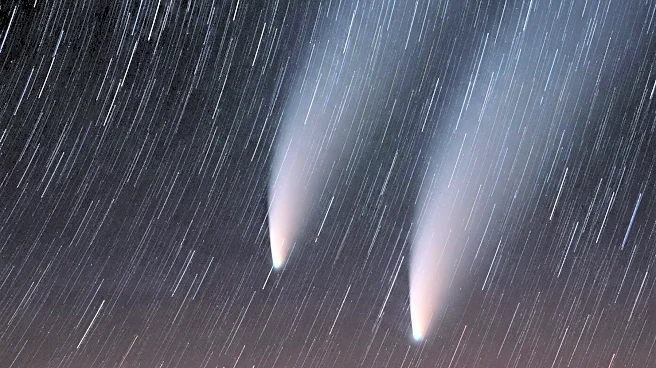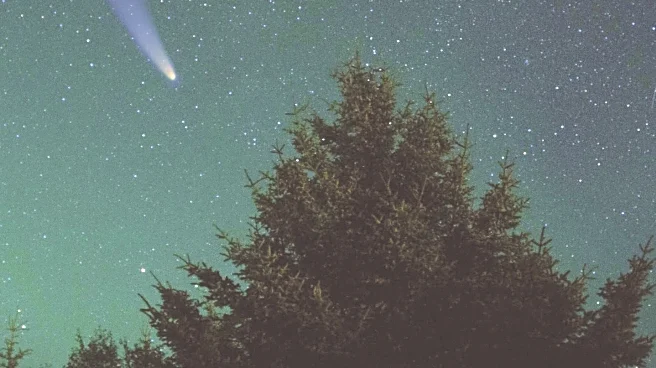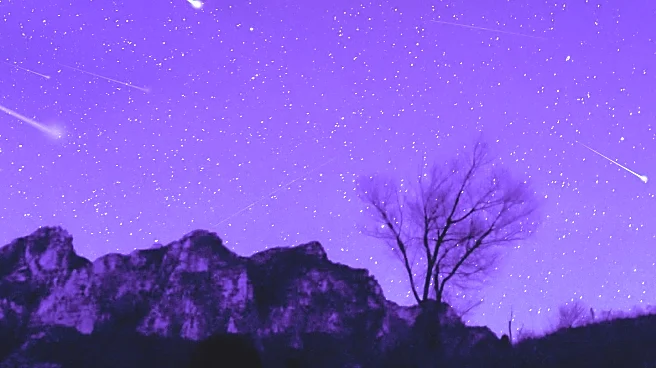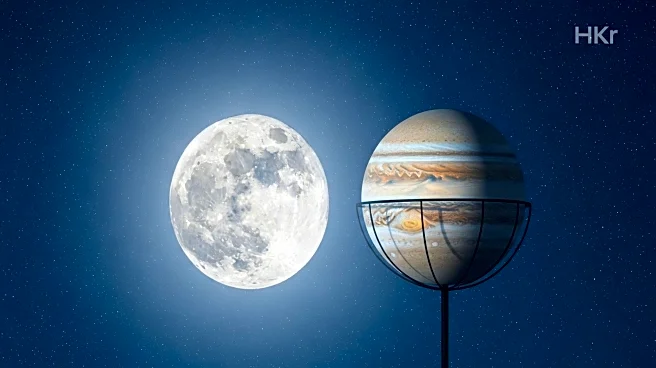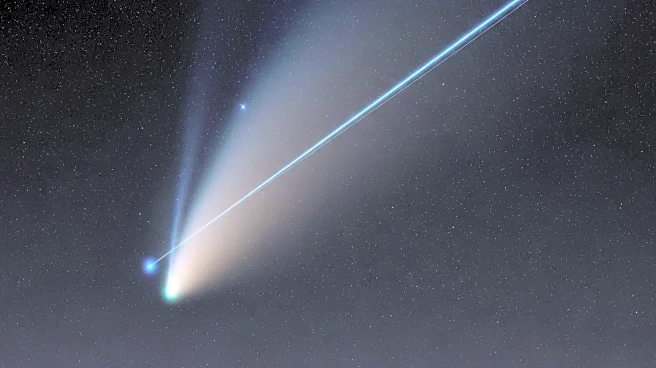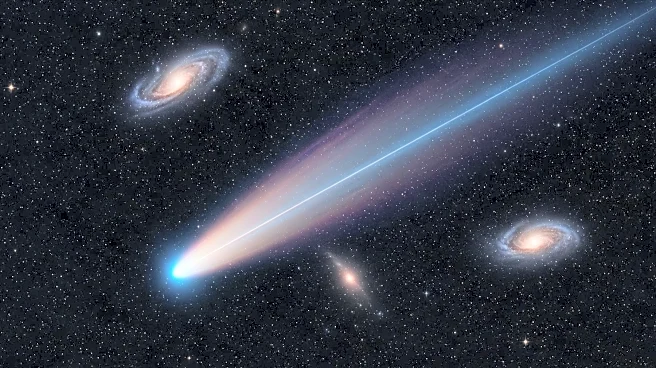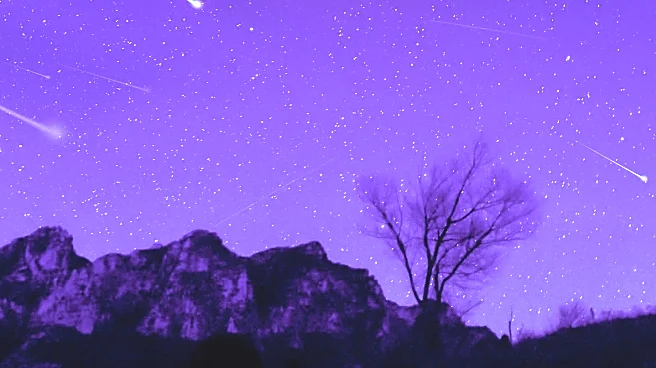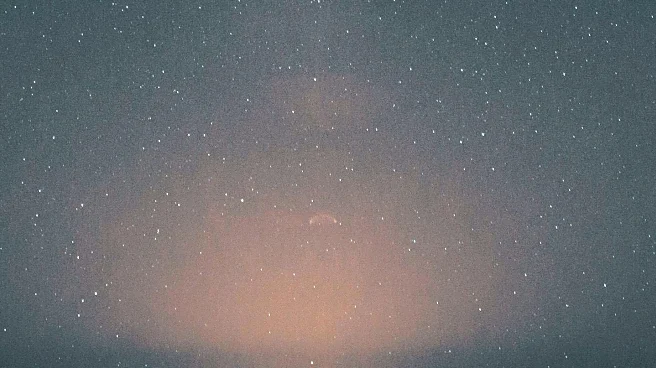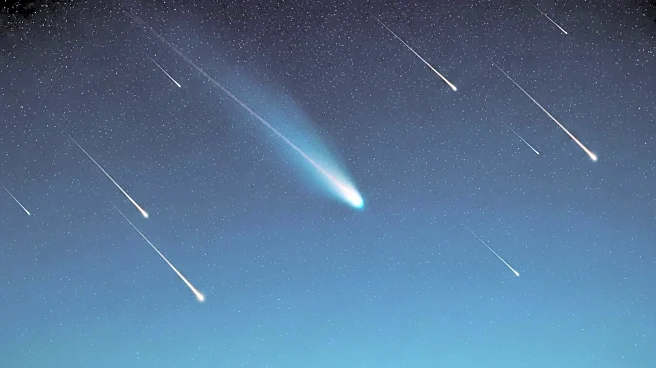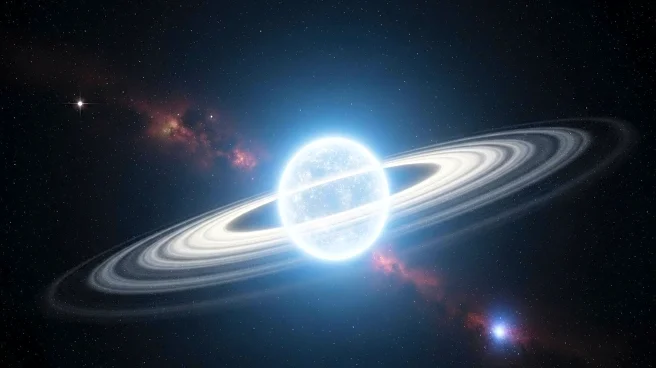What's Happening?
Two rare comets, C/2025 A6 (Lemmon) and C/2025 R2 (SWAN), are set to pass by Earth this October, providing a unique opportunity for skywatchers. Comet Lemmon, discovered in January 2025 by the Mount Lemmon Survey in Arizona, and Comet SWAN, discovered by Ukrainian amateur astronomer Vladimir Bezugly in September 2025, will be visible in the night sky. SWAN is expected to shine brightest around October 20, followed by Lemmon on October 21. These comets will not return for hundreds of years, with SWAN reappearing in 650 to 700 years and Lemmon in 1,300 years. Observers can view these celestial events from their backyards, with the comets potentially visible to the naked eye, especially in areas with low light pollution.
Why It's Important?
The appearance of Comets Lemmon and SWAN offers a rare astronomical event that captivates both amateur and professional astronomers. This event highlights the importance of ongoing celestial surveys and the contributions of amateur astronomers in discovering new cosmic phenomena. The visibility of these comets provides an opportunity for educational outreach and public engagement in astronomy, fostering interest in science and space exploration. Additionally, the event underscores the unpredictability of comet appearances, which can defy even the most precise predictions, adding to the excitement and challenge of skywatching.
What's Next?
Skywatchers are encouraged to prepare for the peak visibility of Comets Lemmon and SWAN by planning trips to areas with minimal light pollution. Observers can use binoculars or telescopes to enhance their viewing experience, and smartphone apps can assist in locating the comets. The Saint Louis Science Center has noted that the comets may be visible from light-polluted locations, making them accessible to a wider audience. As the comets approach their peak brightness, astronomy enthusiasts and educational institutions may organize viewing events to maximize public participation and interest.
Beyond the Headlines
The discovery and observation of Comets Lemmon and SWAN highlight the collaborative nature of astronomical research, involving both professional observatories and amateur astronomers. This event may inspire future generations to pursue careers in astronomy and space sciences, emphasizing the importance of scientific curiosity and exploration. The long-term implications of such discoveries contribute to our understanding of the solar system's dynamics and the role of comets in cosmic history.
